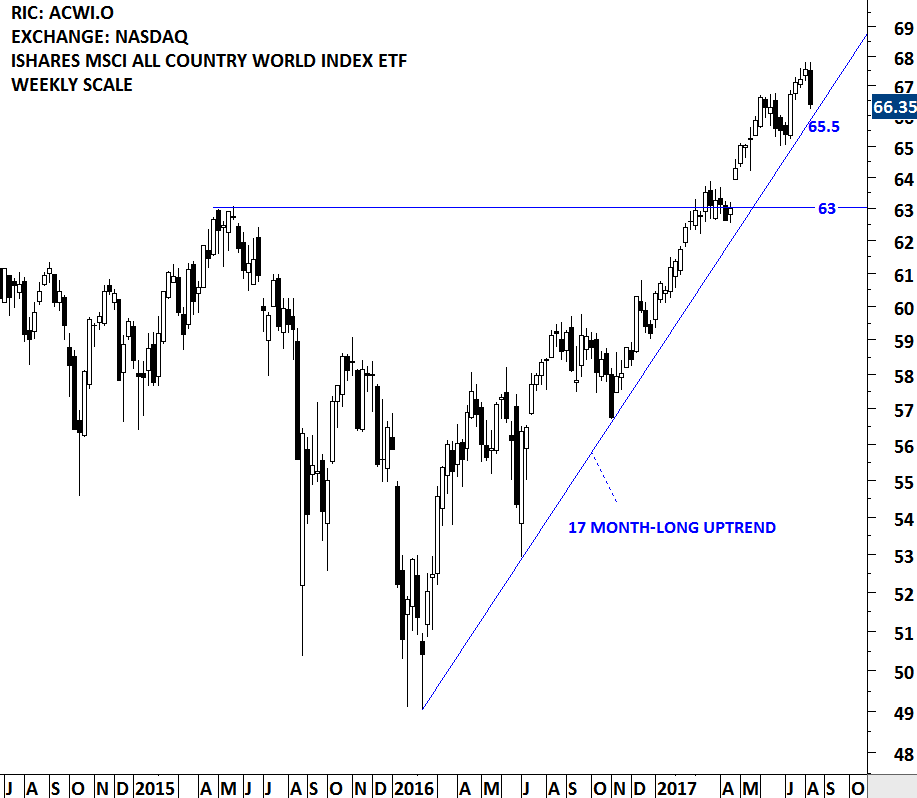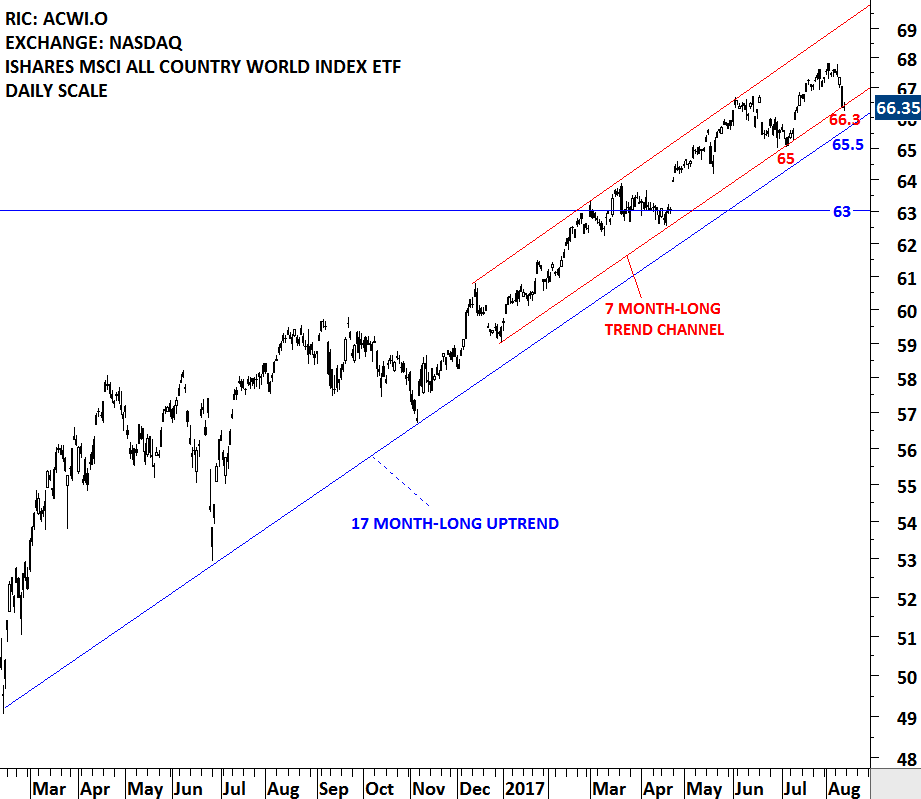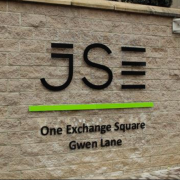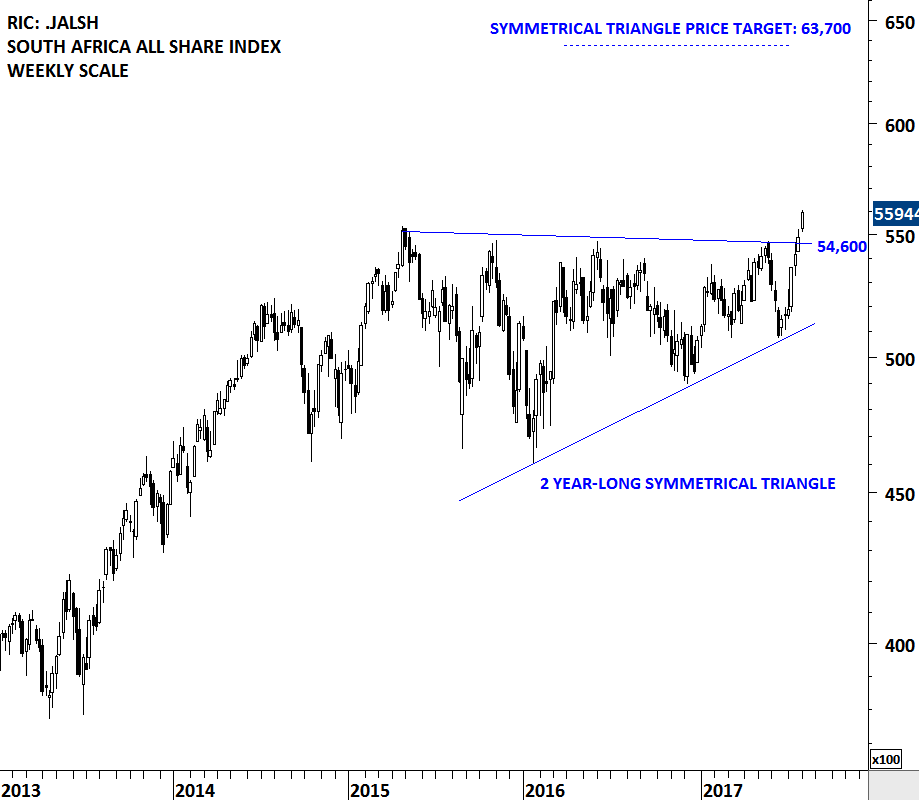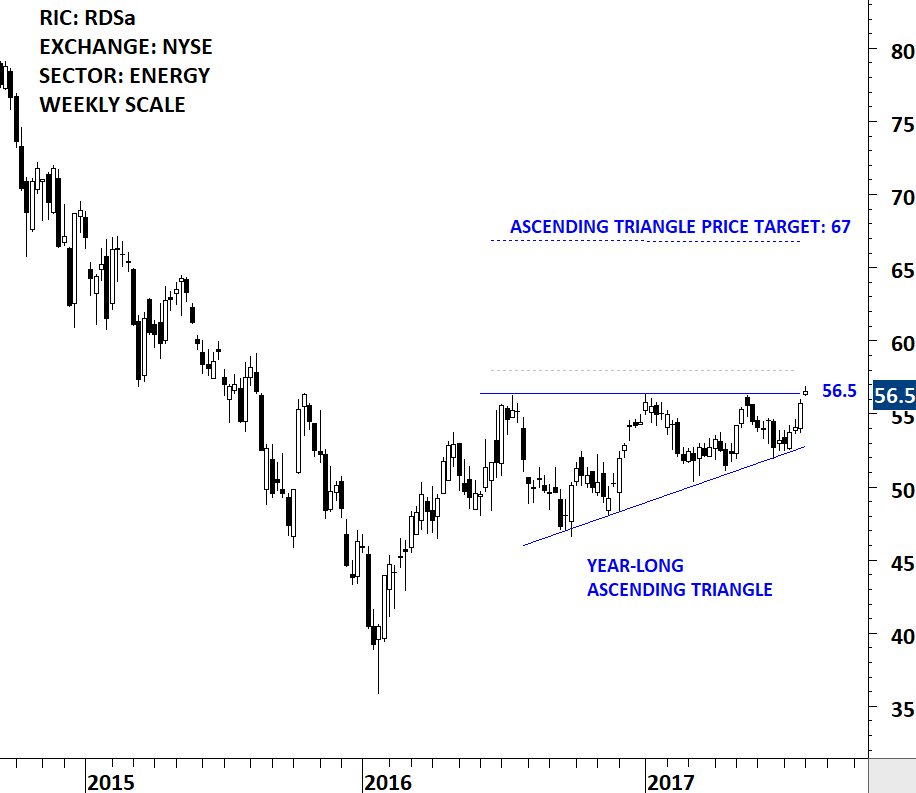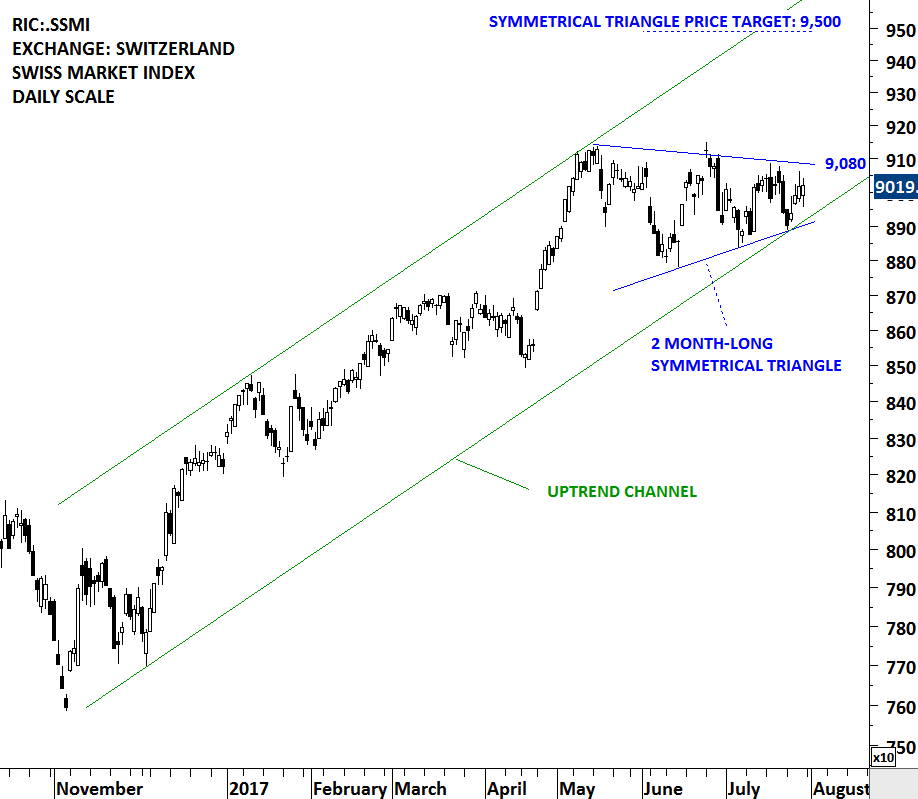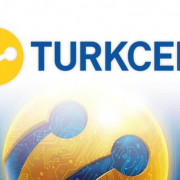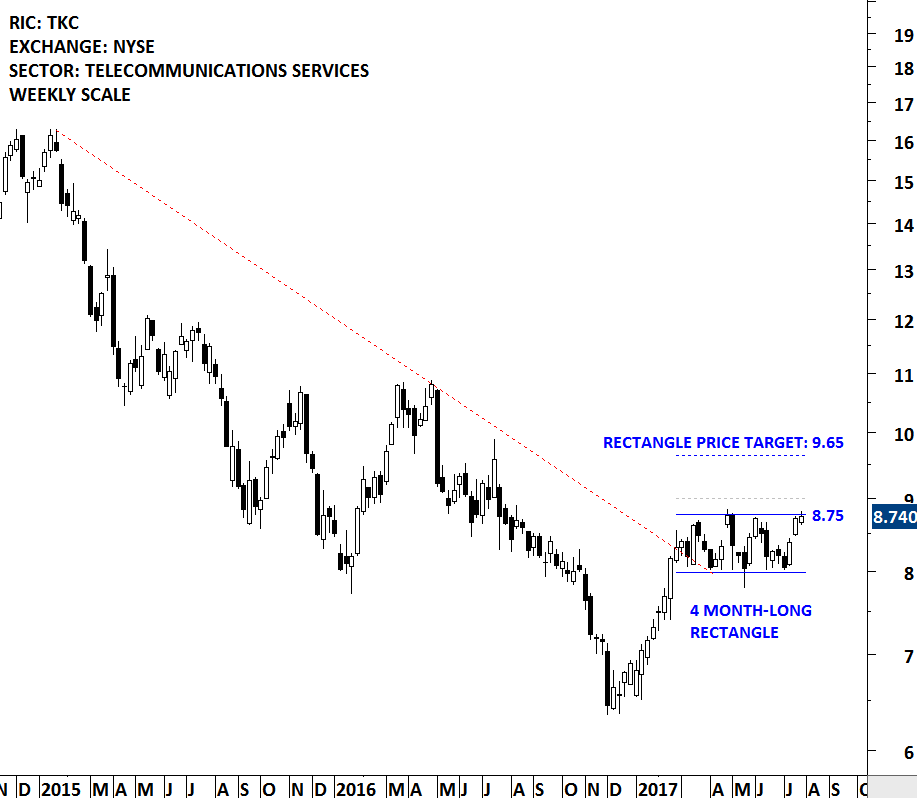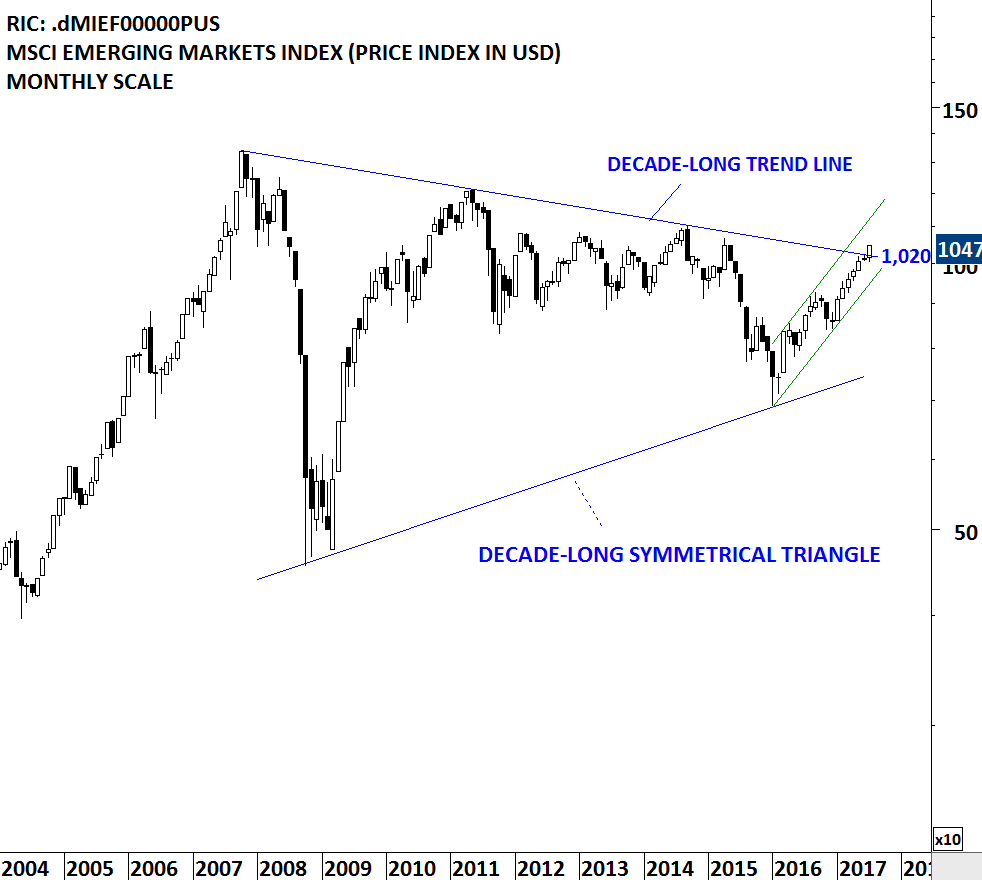GLOBAL EQUITY MARKETS – August 12, 2017
REVIEW
This week’s price action did some technical damage on the charts. MSCI ALL COUNTRY WORLD INDEX ETF, a benchmark for global equity market performance gave back three weeks of gains in one weekly bar. The discussion on the financial networks and social media was about buying the dip. 66.3 is the lower boundary of the 7 month-long trend channel for the ACWI ETF. Failure to hold this support level can push the price to the next support at 65.5, which is the 17 month-long upward trendline. There is no clear chart pattern forming on the MSCI ACWI ETF. For those who are looking for sell signals on the ACWI, the breakdown of the trend channels should give some guidance. In case of further weakness in the global equity markets (a breakdown on the ACWI), this week’s report should be helpful in identifying some of the bearish chart setups in the global equities and ETFs.
